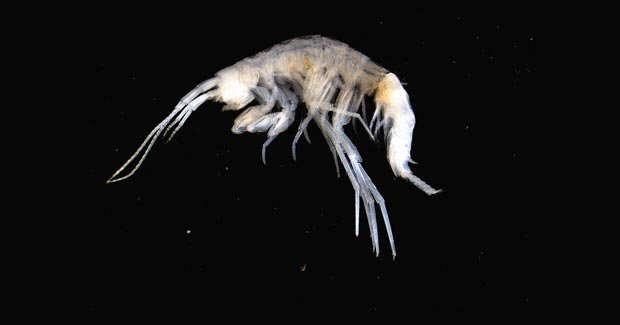Bizarre new species stops Pilliga mining

THE DISCOVERY OF NEW stygofauna species in the groundwater of Pilliga State Forest in New South Wales has brought a $1 billion drilling project to a pause.
Stygofauna are tiny aquatic creatures that live in groundwater or other water-logged, subterranean environments such as caves. The group is made up of a range different species, such as crustaceans, fishes, snails and beetles.
The coal seam gas project was initiated by mining giant Santos, who says the project can provide 25 per cent of NSW’s gas supply. But the NSW government’s recently introduced “water trigger” laws will force the site to stop work until scientists can assess how the drilling will affect Pilliga’s groundwater ecosystem.
Peter Serov, an ecologist at Stygoecologia who made the discovery, says this is the first record of stygofauna in the area. He says he did not expect to find stygofauna in the Pilliga region because they are normally found in groundwaters that have lots of space for them to move about. “But the groundwaters in the Pilliga have mostly solid sandstone, therefore there is little habitat for stygofauna,” he adds.
The three new species, two types of mites and one type of worm, are yet to be named. Although they’re miniscule (1 mm – 2 mm), they feed on bacteria and help to maintain water chemistry and keep groundwater clean. They also keep flow ways open through their burrowing activities, which then helps surface water, such as rivers and streams, to run smoothly.
Bizarre animal traits
Peter says stygofauna have developed specialised adaptability to the dark and scarce environment they live in. “They are colourless, translucent and we can see all their internal organs,” he says. They are also typically blind or without eye structures, and have low metabolisms that allow them to survive for months in dark, barren environments without a meal, he adds.
Stygofauna have a long history in Australia with some remains dating back more than 300 million years. There are potentially many thousands of different species, Peter explains. “Each aquifer is isolated, and with Australia’s geographic changes over geological time reshaping the water sources, stygofauna have evolved into different species”.

One of the new species of stygofauna discovered in the Pilliga State Forest groundwater. (Credit: Peter Serov)
Good indicators of water quality
Stygofauna are not only cleaners, they’re also excellent markers for water quality as they generally live in unchanged environments.
Tony Pickard, a grazier in the Pilliga region, which is part of the southern recharge area of the Great Artesian Basin, commissioned Peter Serov to assist with the study. Tony says the discovery in the area is critical.
He believes the coal seam gas project poses a high risk because if the stygofauna population is affected by drilling fluids or surface spills, it could cause changes in water quality, and could lead to a loss of control of the natural balance.
“The quality of our water will be degraded beyond repair,” Tony says.
Because of the importance of these tiny species, Tony hopes the NSW government will take more notice of groundwater-dependant ecosystems.
Peter says there have not been many stygofauna discoveries on the east coast, and stresses there needs to be more scientific research into the animals because they are “enigmatic” and “quite unique in their own right”.
RELATED STORIES
The damage to Australia’s biodiversity
What’s the hurry with CSG fracking?
Tarkine mine on hold due to court ruling
10 bizarre endangered animals
Vast numbers of ocean species are unknown
Mining could drain Queensland aquifer
Vast area of Nullarbor Plain protected
World Water Monitoring day
The good fight
Life on the floodplains
Fewer species on Earth than thought

